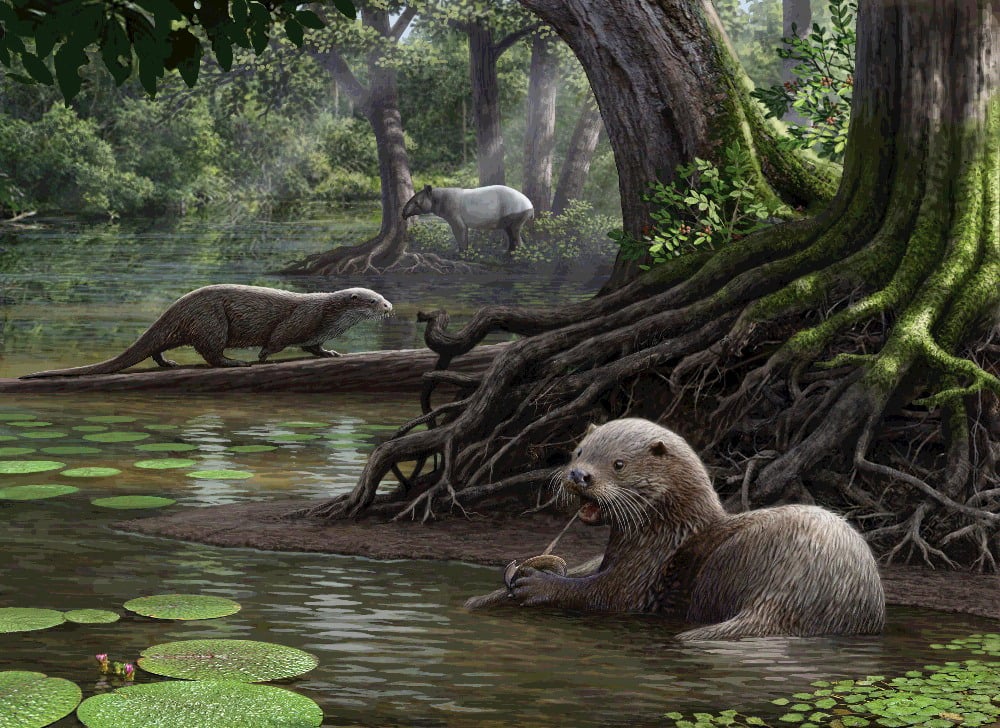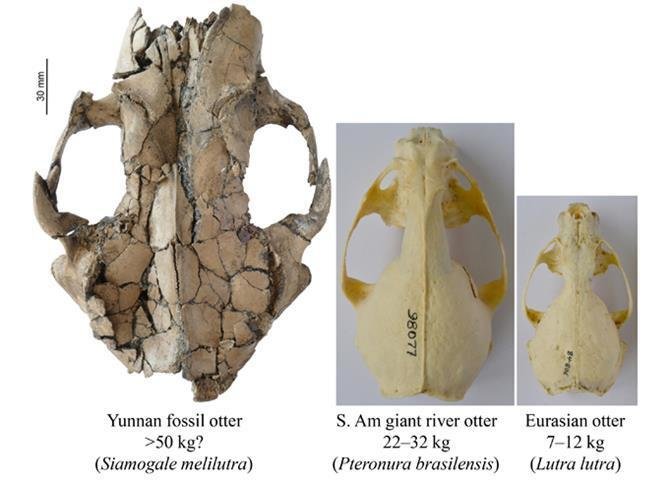
A large otter the size of a wolf, roamed the wooded marshlands of China’s Yunnan Province about six million years ago. Xiaoming Wang, curator of vertebrate paleontology at the Natural History Museum of Los Angeles County in California, and her team arrived at this conclusion after an extensive study of fossils found in the 6.2 million-year-old sediment of the Shuitangba coal mine in Yunnan, China in 2010 and 2015.
Though the team unearthed portions of at least three skeletons from the new species, it was the discovery of the mammal’s skull that shed the most light on the prehistoric creature. However, extracting information from the fossil was no easy task given that it had been flattened during the fossilization process. Team member Dr. Denise Su from the Cleveland Museum of Natural History says, “The bones were so delicate that we could not physically restore the cranium.”

Study co-author Stuart White, a professor emeritus of maxillofacial radiology at the University of California, Los Angeles, spent months painstakingly taking CT scans of each portion of the fossil and creating a 3D image of the skull. Wang says it was like "playing a three-dimensional jigsaw puzzle, only to be done by computer mouse rather than by hands."
But the effort was worth it. The cranial images showed that though the ancient animal had the skull of an otter, its teeth were more like the modern-day badger, leading the researchers to name it Siamogale melilutra (in Latin, meles means badger and lutra means otter). The scientists, who published their findings in the Journal of Systematic Palaeontology on January 23, say that the otter was about two to three times bigger than its modern-day counterpart. They believe it was a member of one of the oldest and most primitive otter lineages, dating back 18 million years to the European badger-like animal Paralutra.

The mammal’s low-crowned, round, cusped teeth indicate that similar to modern-day otters, the ancient animals survived on a diet of mollusks and shellfish. However, judging from the strong jaw and skull, the researchers think that unlike today’s otters, who use a combination of rocks and teeth to crack the hard shells, these powerful animals used just their teeth.
The mystery that remains is the reason for their massive size. According to Su, carnivores usually got bigger in response to the growing size of their prey. However, the clams and shellfish that the ancient mammals ate did not pose that problem. The scientists are also curious about how the large-bodied animals were able to walk on land and swim. Hopefully, future fossil finds of these majestic otters will help answer some of those questions.
Resources: NPR.org,smithsonianmag.com,sci-news.com,tandfonline